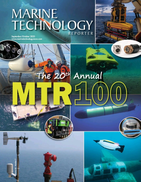
One Fish, Two Fish
system seems to have increased the fish quality and freshness. The producer also highlighted the easy installation and maintenance of the system.Ace Aquatec’s Humane Stunner Universal (A-HSU). Credit: Ace AquatecAce Aquatec’s A-BIOMASS camera. Credit: Ace AquatecInnovaseaInnovasea designs aquatic solutions for fish farming. Within the aquaculture division, they focus on creating full end-to-end solutions that deliver real-time visibility into all farm aspects.Innovasea’s aquaMeasure solution offers real-time updates for instant visibility into changing water conditions. Leveraging
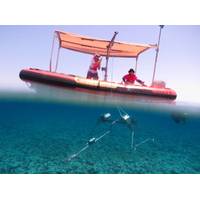
Lander Lab: Cost Efficiency of Baited Ocean Landers
Determining the diversity and distribution of species in an ecosystem is essential to creating a baseline for monitoring studies or to assess the success of conservation and restoration strategies. The methods for sampling marine and aquatic ecosystems can be inefficient and biased, such as diver operated video, or harmful to the environment and biodiversity, such as bottom trawls and seine nets. Both are time-consuming and expensive. Choosing an efficient and cost-effective sampling method to establish baselines and monitor biodiversity is an important consideration in an ecological study.Two non-invas
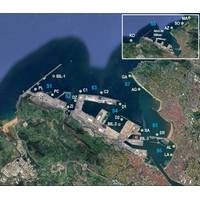
Bilbao Port Authority, University of the Basque Country Renew Biomonitoring Collaboration Agreement
basis to assess the biological and physical-chemical status of the port ecosystem and its immediate environment at any given time, while also identifying the pressures to which it is subject. In short, this biomonitoring is the basis for environmental quality management and the protection of the aquatic systems of the Port of Bilbao.In general terms, the results of the Biomonitoring Plan indicate that in recent years there has been a positive trend in the maturity of biological communities, and that expansion works and port activity have not had a widespread negative impact on them.The Biomonitoring
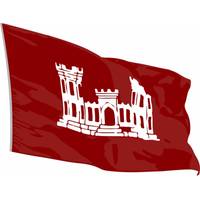
Army Corps of Engineers Seeks Public Comments On Proposal to Renew and Revise Nationwide Permits
and/or Section 10 of the Rivers and Harbors Act of 1899.“The streamlined set of nationwide permits proposed today offers a clear, efficient path for timely authorization of a broad range of project types, while upholding our commitment to protecting the nation’s navigable waters and vital aquatic resources,” said. Maj. Gen. Jason E. Kelly, USACE deputy commanding general for Civil and Emergency Operations.Nationwide permits authorize activities that are similar in nature and cause only minimal adverse environmental impacts to aquatic resources separately or on a cumulative basis. Activities
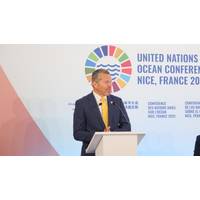
IMO Calls for Action After UN Ocean Conference
will take all stakeholders coming together, sharing information, and aligning actions to bridge differences and drive progress.”Dominguez led an IMO delegation to Nice to highlight the work being done in the maritime sector to combat marine plastic pollution, protect biodiversity from invasive aquatic species introduced by ships, tackle underwater-radiated noise and decarbonize the maritime sector.“IMO has a strong, decades-long history of driving regulatory action to protect the marine environment from harmful impacts of shipping, backed by targeted technical support to Member States.
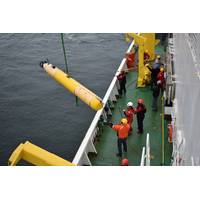
MBARI Research Supports Cryospheric Science
will help refine future climate models at regional scales.Environmental DNA (eDNA) allows scientists to detect the presence of organisms from the tiny bits of genetic material—cells, skin, waste, and mucus—they leave behind. eDNA provides a powerful tool for assessing the biodiversity of aquatic environments.MBARI’s Environmental Sample Processor (ESP) and Filtering Instrument for DNA Observations (FIDO) allow researchers to collect and study eDNA in remote environments. Earlier this year, MBARI, in collaboration with the Australian Antarctic Program, sent ESP and FIDO instruments
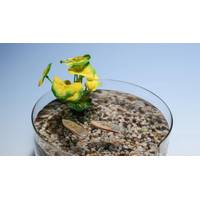
Edible Aquatic Robot Could Collect Environmental Data
for large-scale deployment in sensitive ecosystems,” explains Shuhang Zhang, a doctoral student at EPFL. “In this work, we show how these materials can be replaced with fully biodegradable and edible components.”The boat-shaped robot takes advantage of the same phenomenon used by some aquatic insects to propel themselves across the water's surface: the Marangoni effect. A chemical reaction inside a tiny removable chamber produces carbon dioxide, which, in turn, enters a fuel channel to expel the fuel. The sudden decrease in the water's surface tension caused by the ejected fuel
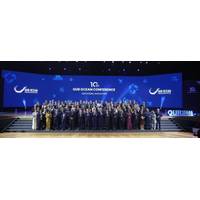
EU Pledges Over €300 Million for Ocean Conservation
. This corresponds to €58 million for the Western Indian Ocean and €42 million for Central Africa, and €20 million for the Pacific.Marine pollution: €65.5 million to fight marine pollution: €18 million to develop a comprehensive European strategy for assessing and monitoring aquatic litter, €43.5 million to support authorities eliminating pollution and transitioning to a more climate-neutral and circular blue economy, and €4 millions of technical assistance to support up to 50 targeted communities in preparing transition agendas, driving local change and promoting
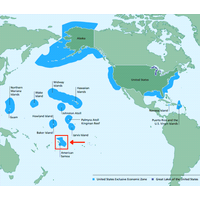
Impossible Metals Seeks Mining Lease Near American Samoa
, which are often unpopular with host communities. Detractors say more research is needed to determine how the practice could affect ecosystems.California-based Impossible Metals said it has developed a robotic device with a large claw that uses artificial intelligence to distinguish between nodules and aquatic life.Any country can allow deep-sea mining in its own territorial waters, roughly up to 200 nautical miles from shore.That means that California-based Impossible Metals does not need permission from the International Seabed Authority (ISA) - created by the United Nations Convention on the Law of
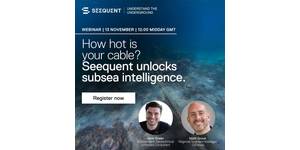
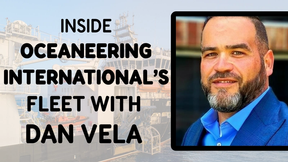
 August 2025
August 2025


